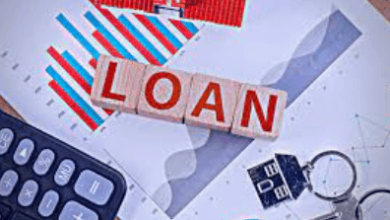Managing Your SBA Loan Payment: Tips for Small Business Owners

Are you a small business owner feeling overwhelmed by the weight of your SBA loan payment? Don’t worry, you’re not alone. Managing loan payments can be challenging, especially for entrepreneurs who are just starting out or going through a rough patch. But fear not! In this blog post, we’ll provide you with valuable tips and strategies to help effectively manage your SBA loan payment and keep your business on track. Whether you’re new to the world of SBA loans or looking for ways to optimize your repayment process, we’ve got you covered. So grab a cup of coffee, sit back, and let’s dive in! Read more
What is a SBA loan payment?
If you are a small business owner looking for financing options, you may have come across the term “SBA loan payment.” But what exactly does it mean? Well, let’s break it down for you. An SBA loan stands for Small Business Administration loan. It is a type of loan that is partially guaranteed by the U. S. government through the Small Business Administration. This guarantee reduces the risk for lenders and makes it easier for small businesses to qualify for loans. There are different types of SBA loans available depending on your specific needs. The most common ones include 7(a) loans, CDC/504 loans, and microloans. Each type has its own eligibility requirements and terms, so it’s important to understand which one suits your business best. One of the key benefits of an SBA loan is that they generally offer lower interest rates and longer repayment terms compared to traditional bank loans. This can help ease the financial burden on small business owners who may be struggling with cash flow or other expenses. To apply for an SBA loan, you will need to gather all necessary documentation such as financial statements, tax returns, and a solid business plan. The application process can be lengthy but working with an experienced lender can help streamline the process. If you’re a small business owner in need of financing assistance, exploring SBA loans could be a viable option worth considering. They provide favorable terms and increased access to capital that can support your growth plans effectively while minimizing financial strain Read more
Types of SBA Loans
When it comes to small business financing, the Small Business Administration (SBA) offers a variety of loan programs designed to meet different needs. Understanding the types of SBA loans available can help you make an informed decision about which option is best for your business. The most common type of SBA loan is the 7(a) Loan Program, which provides funding for general business purposes such as working capital, purchasing equipment, or refinancing existing debt. This program offers flexible terms and can be used by both startups and established businesses. For businesses in underserved communities or those owned by individuals who face significant obstacles in obtaining financing, there are also specialized SBA loan programs. These include the Community Advantage Loan Program and the Microloan Program, both of which aim to support small businesses that may not qualify for traditional bank loans. If you need funds specifically for real estate purchases or improvements, the CDC/504 Loan Program might be a good fit. This program provides long-term fixed-rate financing for major assets like land and buildings. If your business has been affected by a natural disaster or economic downturn, you may be eligible for an SBA Disaster Loan. These loans provide low-interest rates and long repayment terms to help businesses recover from unexpected events. How to Manage Your SBA Loan, Payment Managing your SBA loan, payment can be a challenging task, but with the right strategies in place, you can stay on track and keep your business finances in order. Here are some tips to help you effectively manage your SBA loan, payment. Read more
1. Understand the terms:
It’s crucial to thoroughly understand the terms of your SBA loan, including interest rates, repayment period, and any other conditions that may apply. This will give you a clear picture of what is expected from you and enable better financial planning.
2. Develop a budget:
Create a realistic budget that incorporates your loan payments along with other business expenses. By tracking income and expenses diligently, you’ll have a better idea of how much money is available for loan repayment each month.
3. Communicate with your lender:
If you encounter difficulties making your payments, reach out to your lender promptly. They might be able to offer alternative options such as extending the term or modifying the repayment plan temporarily
.4. Prioritize timely payments:
Make it a priority to pay your SBA loan installment on time every month. Late or missed payments can lead to penalties and damage credit scores both personally and professionally.
5. Explore refinancing options:
As time goes by, circumstances may change for better rates being offered elsewhere or improved creditworthiness – consider refinancing if it makes sense financially.
6. Seek professional advice when needed:
If managing your SBA loan becomes overwhelming or complex due to unforeseen circumstances like economic downturns or market fluctuations don’t hesitate seeking advice from financial experts who specialize in small business loans – they can provide guidance specific tailored specifically towards helping businesses overcome challenges related management their debt obligations more efficiently than going alone without proper knowledge under these scenarios where one wrong step could unravel everything else quickly! Read more
Tips for Small Business Owners
1. Create a Detailed Budget: One of the most important tips for managing your SBA loan, payment is to create a detailed budget for your business. This will help you track your expenses and allocate funds towards your loan payment each month.
2. Prioritize Your Loan Payment: Make sure that paying off your SBA loan is at the top of your financial priority list. Cut back on unnecessary expenses and find ways to increase revenue so that you can consistently make payments on time.
3. Communicate with Your Lender: If you’re facing financial difficulties or are unable to make a payment, it’s crucial to communicate with your lender as soon as possible. They may be able to offer temporary relief options or work out a revised repayment plan based on your current situation.
4. Explore Loan Forgiveness Programs: Depending on the type of SBA loan you have, there may be options for loan forgiveness under certain circumstances, such as economic hardship or disaster-related assistance programs. Research these possibilities and see if they apply to your situation.
5. Seek Professional Help if Needed: Managing an SBA loan can be complex, especially if you’re unfamiliar with financial matters. Consider hiring an accountant or financial advisor who specializes in small business finances to help you navigate through the process and ensure that you stay on track with repayments.
Conclusion
Managing your SBA loan, payment can be a daunting task, but with the right strategies in place, small business owners can navigate this financial responsibility successfully. By understanding what an SBA loan is and the different types available, you can choose the option that best suits your needs. Once you have secured an SBA loan, it’s essential to manage your payments effectively. Take advantage of resources such as budgeting tools and financial advisors to create a realistic repayment plan. Keep track of your expenses and income to ensure that you are allocating enough funds towards your loan payment each month. Additionally, consider exploring options for refinancing or modifying your loan if necessary. If you find yourself facing difficulties in making timely payments, don’t hesitate to reach out to your lender for assistance or explore alternative financing solutions. Stay proactive in managing your finances overall. Continuously monitor cash flow and seek opportunities for growth while keeping a close eye on any changes in interest rates or terms related to your SBA loan. Read more



